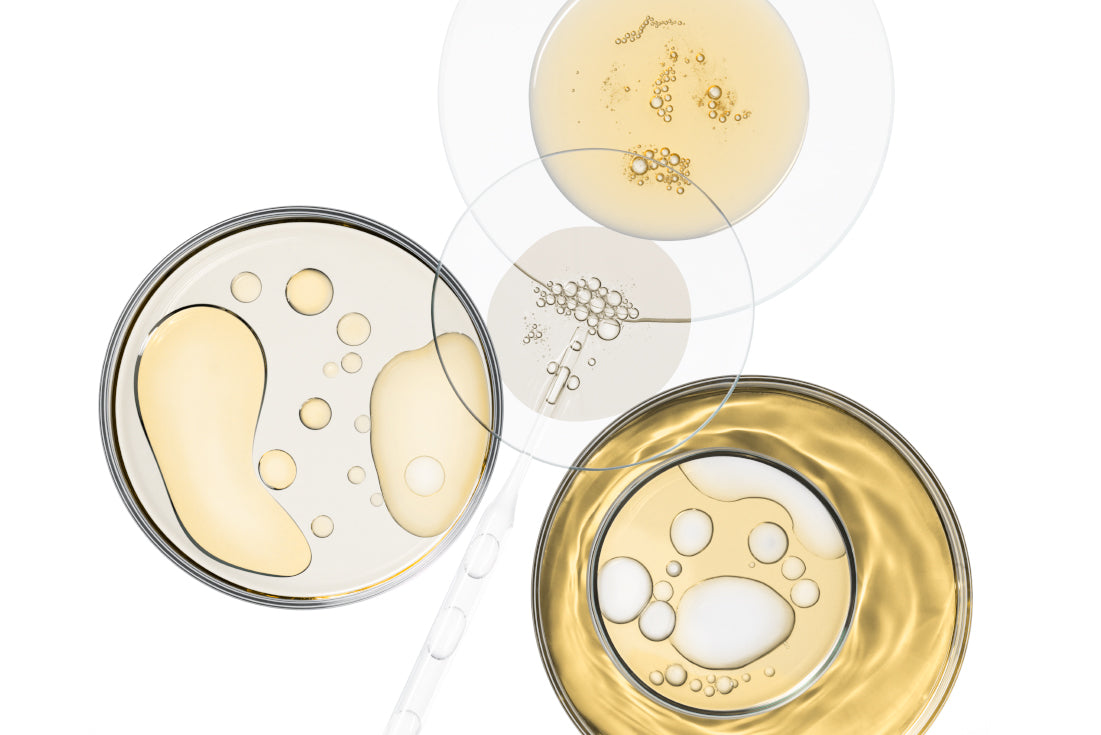By Spencer Bouhadir, Chief Scientific Officer
March 16, 2025
In the ever-evolving world of skincare and haircare, one ingredient stands out as a true game-changer: GHK-Cu, a copper-binding tripeptide (glycyl-L-histidyl-L-lysine). Discovered in 1973, this naturally occurring peptide has earned its reputation as a "miracle molecule" due to its remarkable regenerative, protective, and anti-aging properties. From rejuvenating aging skin to promoting thicker, healthier hair, GHK-Cu is a powerhouse backed by decades of research. But not all forms of GHK-Cu are created equal. In this post, we’ll explore why GHK-Cu is a must-have in your beauty routine and why its standard form outshines lipid derivatives from a biofunctional perspective.
Why GHK-Cu is a Miracle Molecule
GHK-Cu is a small but mighty peptide found in human plasma, saliva, and urine, though its levels decline with age. When bound to copper ions, it becomes a versatile bioactive complex that supports multiple biological processes. Here’s why it’s a superstar for both skincare and haircare:
1. Skincare Superpowers
GHK-Cu is a multi-tasking peptide for skin health.
· Boosts Collagen and Elastin Production: GHK-Cu stimulates fibroblasts to produce collagen, elastin, and glycosaminoglycans, which are essential components for firm, plump skin. Clinical studies have shown it outperforms vitamin C and retinoic acid in increasing collagen in photoaged skin.
· Reduces Wrinkles and Fine Lines: In controlled trials, GHK-Cu serums reduced wrinkle volume and depth, leaving skin smoother and more youthful.
· Fights Oxidative Stress: As a potent antioxidant, GHK-Cu neutralizes free radicals, protecting skin from UV damage and environmental stressors. It even blocks lipid peroxidation byproducts like 4-hydroxynonenal, safeguarding keratinocytes.
· Improves Skin Density and Elasticity: GHK-Cu tightens loose skin, reverses thinning, and enhances barrier function, making it ideal for mature or photodamaged skin.
2. Hair Growth Hero
GHK-Cu isn’t just for skin; it’s a game-changer for hair health, offering a natural alternative to treatments like minoxidil:
· Stimulates Hair Follicles: GHK-Cu increases blood flow to the scalp, delivering nutrients and oxygen to hair follicles. This promotes follicle proliferation and enlarges follicle size, resulting in thicker, stronger hair.
· Prevents Follicle Shrinkage: By reducing inflammation and oxidative stress, GHK-Cu protects follicles from premature miniaturization, a key factor in hair loss.
Standard GHK-Cu vs. Lipid Derivatives: Why Standard Wins
GHK-Cu is available in various forms, including its standard water-soluble form and lipid derivatives like palmitoyl-GHK (Pal-GHK), which are modified with fatty acids to enhance skin penetration. While lipid derivatives sound promising, the standard GHK-Cu form is superior from a biofunctional standpoint. Here’s why:
1. Optimal Bioavailability
· Standard GHK-Cu: The water-soluble form of GHK-Cu is highly bioavailable, allowing it to interact directly with cell surface receptors and copper-dependent enzymes. Its small size (molecular weight ~340 Da) enables it to penetrate the skin’s stratum corneum effectively, especially when formulated in serums.
· Lipid Derivatives: Attaching a fatty acid (e.g., palmitic acid) increases the molecule’s size and lipophilicity, which may improve penetration through the skin’s lipid barrier. However, this modification can reduce solubility in the aqueous environment of the dermis, where GHK-Cu exerts its biofunctional effects. The larger molecules may also struggle to bind efficiently to receptors, limiting its activity.
2. Preservation of Bioactivity
· Standard GHK-Cu: The native tripeptide structure is optimized for binding copper ions and interacting with cellular pathways, such as those involving collagen synthesis, angiogenesis, and antioxidant defense. Its simplicity ensures it remains fully functional in stimulating gene expression (e.g., MMP1, MMP2, and TIMP1) and modulating TGF-beta activity.
· Lipid Derivatives: The addition of a lipid tail can alter the peptide’s conformation, potentially disrupting its ability to bind copper or interact with target proteins. This may weaken its regenerative and antioxidant effects, as the modified structure may not mimic the natural peptide’s efficacy.
The Future of Beauty is GHK-Cu
GHK-Cu is more than just a trend—it’s a scientifically validated ingredient that harnesses the body’s natural repair mechanisms to deliver radiant skin and lush hair. Its standard form, with unmatched bioavailability, bioactivity, and clinical backing, is the gold standard for achieving transformative results. While lipid derivatives like Pal-GHK may offer enhanced penetration in some contexts, they fall short of standard GHK-Cu’s ability to work harmoniously with your skin and hair’s biology.
Conclusion
GHK-Cu offers an incredible range of benefits for both skin and hair, and its standard, water-soluble form outshines the modified lipid derivatives in terms of bioactivity and effectiveness. Whether you're looking to smooth wrinkles, enhance collagen production, or stimulate hair growth, GHK-Cu is a powerful, science-backed ingredient that should be a staple in your beauty routine.
References:
· Pickart, L., & Margolina, A. (2018). Regenerative and Protective Actions of the GHK-Cu Peptide in the Light of the New Gene Data. International Journal of Molecular Sciences, 19(7), 1987.
· Abdulghani, A. A., et al. (1998). Enhanced collagen synthesis in photoaged skin with GHK-Cu. Journal of Investigative Dermatology.
· Empower Pharmacy. (2024). GHK-Cu Peptide for Skin & Hair.



Leave a comment
This site is protected by hCaptcha and the hCaptcha Privacy Policy and Terms of Service apply.